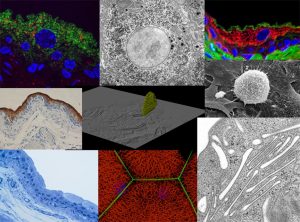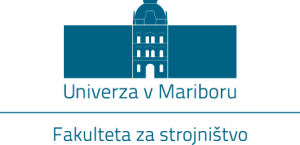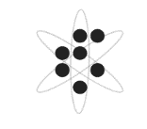Partners

University of Ljubljana, faculty of medicine
Coordinator: prof. dr. Peter Veranič
Members: prof. dr. Mateja Erdani Kreft, prof. dr. Rok Romih, dr. Polonca Ferk, doc. dr. Brane Leskošek, prof. dr. Dušan Šuput,
dr. Andrej Vovk, prof. dr. Marko Kreft, akad. prof. dr Robert Zorec
1. Infrastructural Center – Biomedical Center for Microscopy – BMCM
2. Center for Clinical Physiology – CKF
3. Infrastructure Center for Data Management
4. Carl Zeiss Reference Center for Confocal Microscopy-Center LN-MCP
5. ELIXIR-SI Center
1. Infrastructural Center – Biomedical Center for Microscopy (BMCM)
Units that make up BMCM: Institute of Biophysics (IBF MF), Institute of Cell Biology (IBC MF), Institute of Microbiology and Immunology (IMI MF), Institute of Pathology (IP MF), Group for Nano and Biotechnology Applications (FE)
Basic methods for studying biological processes at the cellular level include light and electron microscopy, which allow determining the location where these processes take place. Microscopy methods are developing very rapidly in recent times and in this way offer new possibilities for studying living cells and ensure the tracking of individual molecules at the cellular level or the precise determination of the location of these molecules in intracellular structures. New methods require top technical and professionally trained personnel and quality and well-maintained equipment. The basic purpose of the Biomedical Center for Microscopy is to connect research units that successfully implement microscopy methods on biological materials to provide knowledge and equipment to visiting researchers. The main equipment of the Biomedical Center for Microscopy includes transmission and scanning electron microscopes, the latest methods of immunolabeling of cellular molecules, negative contrast, cryomethods, correlative microscopy, the FRIL method and electron tomography. Classical light and fluorescence microscopy are indispensable methods in any molecular and cellular biological research work and are often necessary in diagnostics as well. Their upgrades are enhanced resolution confocal microscopy and TIRF microscopy, which enable optical cutting of fluorescently labeled samples and quantitative analysis in biophysics and cell biology. The combination of light and electron microscopy, the so-called correlative microscopy, combines the advantages of light and electron microscopy, and enables the study of dynamic processes in living cells and a resolution close to 1 nm. Cell culturing and manufacturing nanoparticles opens up excellent opportunities for our Biomedical Center for Microscopy to carry out the most up-to-date research in the field of targeted introduction of medicinal agents into cancerous and pathogen-infected cells. An additional advantage is the possibility of manipulating cells with optical tweezers and microfluidic systems. The Biomedical Center for Microscopy provides interdisciplinarity, which is a key to successful work and optimal use of equipment and method development.

3. Infrastructure Center for Data Management
The Infrastructure Center MRIC IBMI operates within MRIC UL and is partially funded by ARIS.
Domains in which MRIC IBMI provides expertise and services:
1. Data Management
The main purpose of data management is to enhance the quality, accessibility, and utilization of generated digital research data, following the principles of open science and FAIR principles (findability, accessibility/archiving, interoperability, and reusability). We provide advice, services, and tools for researchers at UL MF and beyond in the life sciences, including:
- Research data management plans (RDMPs). In collaboration with the ELIXIR-SI Center, we manage the Slovenian version of the DSW tool, enabling researchers to prepare, update, and monitor the quality of RDMPs for doctoral theses, European projects, and other initiatives.
- Data storage, repository, research registries and databases. We offer services and tools in collaboration with the ELIXIR-SI Center on the ELIXIR-SI HPC computing cluster.
- Data analysis and processing
- Assistance in using repositories, other medical informatics services, electronic health record solutions, and standards in medical informatics (HL7 and OpenEHR).
- Researching and implementing new solutions in the field of digital user interfaces for use in various biomedical environments.
2. Implementation of Learning Management Systems (LMSs) in Research, Pedagogical, and Professional Work at UL MF
3. Bibliometric Research and Citation Analysis
4. Central Information and Communication Equipment of UL MF
5. Biostatistical Analyses
ELIXIR-SI Center
Data management is one of the foundational and key activities of the Institute for Biostatistics and Medical Informatics (IBMI) at the Faculty of Medicine UL, and is carried out within the subunit of the ELIXIR-SI Center.
The ELIXIR-SI Center, as a part of IBMI, has state-of-the-art research infrastructure and a growing team of experts, including data managers, data stewards, data advisors, as well as researchers in data management and bioinformatics.
Research data management is crucial for implementing the open access strategy, which is rapidly gaining ground in research projects and tasks in Slovenia and is already a mandatory part of European projects.
Data management is an essential part of the research process in medicine, without which comprehensive analyses become nearly impossible. Improving local data management, using Data Management Plans (DMPs), and maintaining a research data archive/repository in accordance with open science guidelines and FAIR principles in the long term greatly enhances the utilization of research-generated data and the quality and impact of publications.
The ELIXIR-SI Center team, one of the largest in the field of data management in medicine, independently and in collaboration with external partners, primarily through the European ELIXIR network, develops tools and services for data management. IBMI’s vision is to leverage the knowledge and experience of this team to facilitate data management for all researchers at the Faculty of Medicine UL and wider.
The tasks of the ELIXIR-SI Center team include:
- Advising and assisting in the use of data management services at the Faculty of Medicine UL (for data storage or analysis).
- Providing easier access to services and tools for planning, collecting, and analyzing data for all researchers at the Faculty of Medicine UL.
- Collaborating in the preparation and development of research data management plans, including research planning and writing project proposals.
- Collaborating in bioinformatics analysis and interpretation of the results.
- Providing a single entry point for planning comprehensive or specific data management.
- Research collaboration, involving medical informatics and bioinformatics within projects or other research endeavors.
List of project/programmes connected to EuBI/SiMBiON
University of Ljubljana, Biotechnical faculty

Infrastructure center "Microscopy of Biological Samples
Coordinator: prof. dr. Rok Kostanjšek
Members:
prof. dr. Rok Kostanjšek,
doc. dr. Miloš Vittori,
doc. dr. Nada Žnidaršič
In the infrastructure center “Microscopy of Biological Samples” offers a wide range of techniques for the preparation and observation of biological samples, from the level of macromolecules, viruses, bacteria and protozoa, to plants and animals.
We enable the observation and analysis of biological macrostructures by classic and fluorescent stereomicroscopy. Observations and analysis at the level of cells and tissues are provided by classic light-microscopic techniques and fluorescence microscopy upgraded by a system for 3D reconstruction of samples. Visualization at the ultrastructural and molecular level is performed by scanning (TEM) and scanning (SEM) electron microscopy. 3D analysis of macroscopic samples is complemented by high-resolution X-ray tomography (micro-CT). In addition to visualization, the center also offers support in the form of quantitative image analysis and interpretation of the results.
In the field of sample preparation, the center offers avrious methodologies and equipment for histological and histochemical techniques on paraffin and frozen tissue slices, as well as specific localization of biomolecules and cellular processes by molecular techniques such as in situ hybridization, immunolocalization and localization by specific fluorescent markers. Preparation of biological samples for electron microscopy includes a wide array of approaches and methodologies for preseration of structural characteristics of living cells during their observation in under conditions of electron micoscope. The preparation of biological samples for SEM includes special techniques for drying, sputtering and mounting of samples, while the sample preparation for TEM comprise embedding in resins, cutting to ultrathin sections and cryosections, contrasting and localization of cellular structures in the samples.
Chair of Botany and Plant Physiology, Dept of Biology
Coordinator: prof. dr. Katarina Vogel-Mikuš
Members:
prof. Dr. Katarina Vogel-Mikuš,
prof. dr. Marjana Regvar
Assoc. prof. dr. Paula Pongrac
The Chair of Botany and Plant Physiology, within the framework of the fundamental research program P1-0212 “Plant biology” deals with studies of plant physiology and ecology using molecular approaches such as genomics, transcriptomics, metabolomics and ionomics and imaging the distribution of elements and biomolecules at the organic, tissue, cellular and subcellular level.
Within the frame of SiMBION, we offer
1) preparation of biological samples (plant, animal, cells) by rapid freezing for imaging of the distribution of elements and biomolecules with synchrotron micro-XRF, micro-PIXE, MeV SIMS, nano-SIMS and micro-FTIR at the organic, tissue and cellular level.
2) help in writing projects for regular beamtime calls at international synchrotron facilities (e.g. Elettra, ESRF, DESY, Alba, Diamond, Soleil)
3) data analysis obtained by synchrotron light based techniques, such as XRF, XAS and FTIR

University of Ljubljana, Veterinary faculty
Center for Microscopy and Image Analysis
Coordinator: prof. dr. Robert Frangež
Deputy coordinator prof. dr. Milka Vrecl Fazarinc
The Center for Microscopy and Image Analysis at the Veterinary Faculty comprises several specialized laboratories, including the Laboratory of Physiology, Confocal Microscopy, Cell Culture, Histology and registered experimental animal facilities, all of which are parts of the Institute of Preclinical Sciences. The Center supports research programs within veterinary medicine and other biomedical sciences. It equips scientists with the research equipment and technical expertise they need to obtain reliable and reproducible scientific data using microscopy and electrophysiological methods. We also offer the possibility to perform procedures on laboratory animals and to work with cells, animal tissues/organs in vitro. Observations and analysis at the level of cells and tissues are made possible by light microscopy techniques and confocal fluorescence microscopy, enabling 3D-image reconstruction. Center is committed to advancing research in veterinary medicine and related biomedical fields by offering critical resources and specialized expertise.

National Institute of Chemistry @font-face {font-family:Helvetica; panose-1:0 0 0 0 0 0 0 0 0 0; mso-font-charset:0; mso-generic-font-family:auto; mso-font-pitch:variable; mso-font-signature:-536870145 1342208091 0 0 415 0;}@font-face {font-family:"Cambria Math"; panose-1:2 4 5 3 5 4 6 3 2 4; mso-font-charset:0; mso-generic-font-family:roman; mso-font-pitch:variable; mso-font-signature:3 0 0 0 1 0;}@font-face {font-family:Calibri; panose-1:2 15 5 2 2 2 4 3 2 4; mso-font-charset:238; mso-generic-font-family:swiss; mso-font-pitch:variable; mso-font-signature:-469750017 -1073732485 9 0 511 0;}p.MsoNormal, li.MsoNormal, div.MsoNormal {mso-style-unhide:no; mso-style-qformat:yes; mso-style-parent:""; margin-top:0cm; margin-right:0cm; margin-bottom:8.0pt; margin-left:0cm; line-height:107%; mso-pagination:widow-orphan; font-size:11.0pt; font-family:"Calibri",sans-serif; mso-ascii-font-family:Calibri; mso-ascii-theme-font:minor-latin; mso-fareast-font-family:Calibri; mso-fareast-theme-font:minor-latin; mso-hansi-font-family:Calibri; mso-hansi-theme-font:minor-latin; mso-bidi-font-family:"Times New Roman"; mso-bidi-theme-font:minor-bidi; mso-ansi-language:SL; mso-fareast-language:EN-US;}.MsoChpDefault {mso-style-type:export-only; mso-default-props:yes; font-size:11.0pt; mso-ansi-font-size:11.0pt; mso-bidi-font-size:11.0pt; font-family:"Calibri",sans-serif; mso-ascii-font-family:Calibri; mso-ascii-theme-font:minor-latin; mso-fareast-font-family:Calibri; mso-fareast-theme-font:minor-latin; mso-hansi-font-family:Calibri; mso-hansi-theme-font:minor-latin; mso-bidi-font-family:"Times New Roman"; mso-bidi-theme-font:minor-bidi; mso-ansi-language:SL; mso-fareast-language:EN-US;}.MsoPapDefault {mso-style-type:export-only; margin-bottom:8.0pt; line-height:107%;}div.WordSection1 {page:WordSection1;}
Department of Analytical Chemistry
Members: Dr. Samo Hočevar, Dr. Martin Šala, Dr. Johannes T. van Elteren
Research work at the Department of Analytical Chemistry is carried out within the framework of the fundamental research program P1-0034 “Analysis and chemical characterization of materials and processes” and includes fundamental studies and the development of analytical tools, sensors and approaches in three strongly intertwined areas.
- Elemental (Bio)Imaging:
- Development of laser ablation-ICP-mass spectrometry (LA-ICP-MS) protocols for 2D/3D elemental (bio)imaging in topical samples associated with environmental, biomedical, and material research,
- Development of in-situ single-particle (SP) analysis methods in nano(bio)metallomics, including nanoparticle sizing and counting, based on LA-SP-ICP-MS.
- Electrochemical (Bio)Sensing:
- Development of electrochemical (micro)sensors, biosensors, and gas sensors,
- Study of electrode processes and new sensing materials,
- Development of electrochemical methodologies and their application studies.
- Atmospheric Chemistry:
- Study of chemical processes in atmospheric aerosols,
- Physico-chemical characterization of size-segregated atmospheric (nano)aerosols,
- Development of new methods for indoor & outdoor nanoparticle characterization and study of their transformations.
We also provide:
- Special chemical analyses and sample preparation studies for academic and non-academic/industrial partners (also within the Infrastructure Program) with a focus on the development and adaptation of analytical methodologies for all types of samples (environmental, industrial, biological, pharmaceutical, etc.) to measure practically all elements and numerous inorganic and organic ions,
- Education and training of undergraduate and postgraduate students, and postdoctoral guest-fellows.
List of project/programmes connected to EuBI/SiMBiON
![]()
National Institute of Biology
The National Institute of Biology (NIB) is the largest independent public research institute for the natural sciences in Slovenia, which creates new knowledge through fundamental research in the field of biology and related natural sciences, environmental protection, biotechnology and biomedicine.
Infrastructural Centre Planta (IC Planta)
The National Institute of Biology (NIB) is the largest independent public research institute for the natural sciences in Slovenia, which creates new knowledge through fundamental research in the field of biology and related natural sciences, environmental protection, biotechnology and biomedicine, which it publishes in various scientific publications. It puts the new knowledge created into practice for the needs of state and local bodies and for economic entities with the goal of improving the quality of life. In addition, it also participates in the education of students at the undergraduate and postgraduate level.
All of this is made possible by the National Institute of Biology’s modern, technologically demanding large infrastructure equipment, which is managed by two infrastructure centers at NIB, the Planta Infrastructural Center (IC Planta) and the Piran Marine Biological Station Infrastructure Center (IC MBP). The large infrastructure equipment is grouped into five sections: section for electron, confocal and FTIR microscopy, section for quantitative nucleic acid research, section for growing plants, tissue cultures and biocultures, section for marine observation system and field work at sea, and section for marine chemistry and other chemical analysis applications. With their extensive infrastructure equipment, the two NIB infrastructure centers are included in many national and international infrastructure networks. Thus, IC Planta with its large infrastructure equipment for microscopy is included in the SimBION consortium.
List of project/programmes connected to EuBI/SiMBiON

University Medical Centre Maribor
Members: Prof. Samo Karel Fokter, MD, PhD
University Medical Centre Maribor is a public healthcare institution providing secondary and tertiary healthcare for the wider eastern region of Slovenia and certain subspecialist healthcare services for the southeastern part of Slovenia and the Carinthia region. It employs 3500 people (600 specialists and residents, 1500 healthcare practitioners and other staff), making it one of the largest healthcare institutions in Slovenia and the most important healthcare institution in northeastern Slovenia. The hospital is facilitated with 1311 hospital beds and the average length of hospital stay is 7 days. Work at individual departments is very intensive, which is the result of a shorter duration of stay. Where possible, healthcare is practiced within daily hospitals and specialist outpatient clinics, where approximately 400,000 examinations are performed yearly. The University Medical Centre Maribor aims to continually improve by following world trends in medicine and expand to medical fields, which have not been covered so far.
The University Medical Centre Maribor provides the following: specialized hospital healthcare, including surgical activities, internal medicine activities, gynecologic and obstetric activities, activities by other independent medical services and joint medical services, including medical research, which significantly affects the development of medical science, education of new PhDs, management and acquisition of research projects, maintaining the status of a university medical centre.
List of project/programmes connected to EuBI/SiMBiON

Infrastructure Research Center of the University of Maribor
University Center for Electron Microscopy
Members:
red. prof. dr. Ivan ANŽEL, univ. dipl. inž. metal. in mater.
izr. prof. dr. Rebeka RUDOLF, univ. dipl. inž. str.
dr. Peter MAJERIČ, univ. dipl. inž. str.
MR Žiga Jelen, mag. pol.
Doris Golub, prof. kem. in biol.
The University Center for Electron Microscopy – UCEM was founded with the aim of combining knowledge and experience about electron microscopy and for the highest possible quality research work and the greatest possible utilization of the large research equipment that we have combined for this purpose.
List of project/programmes connected to EuBI/SiMBiON

Jožef Stefan institute
The Jožef Stefan Institute is the largest public research organization in Slovenia. It employs close to 1,000 people, of which almost half are PhDs. The areas of work roughly cover the following topics: physics, chemistry, material science, information and communication technologies, biochemistry and reactor technology.
F2 – DEPARTMENT OF LOW AND MEDIUM ENERGY PHYSICS
At the Department of Low and Medium Energy Physics (F2), we carry out basic research in the field of nuclear and atomic physics, and in addition, we use the acquired knowledge to solve interdisciplinary research problems, such as radiological environmental control, material research, fusion, biology, energy storage, medicine , pharmacy and archaeometry. We conduct research on our own instrumentation, which includes an ion accelerator, ionizing radiation detectors, as well as experimental devices for atomic physics and calibrated radiation fields. In addition, the colleagues of the department regularly visit large experimental facilities abroad: accelerators, synchrotrons, free electron lasers and fusion reactors. The Ecological Laboratory with Mobile Unit (ELME), which is a specialized unit of Civil Protection, operates within the department.
F5 - Department of Solid-State Physics, Prof. Dr. Igor Serša

The activity of the Department of Solid-State Physics consists of research activities in the field of physics of disordered solid matter, physics of soft matter and physics of surfaces, as well as experimental biophysics. Part of the latter is also the Magnetic Resonance Imaging Laboratory, which has been operating since 1987, when the first magnetic resonance (MR) imaging system in Slovenia was installed at IJS. Around this, a group of researchers from various fields of science: physics, medicine, biology, veterinary medicine, and forestry, which expressed interest in this new imaging method, began to form. In addition, the installation of this system significantly contributed to the faster establishment of the magnetic resonance imaging method in the clinical work of doctors, especially radiologists. Since then, the original 100 MHz MR imaging system has been significantly updated, and a newer, stronger and more powerful 400 MHz MR imaging system has also been installed, which enables MR microscopy and thus the research of various materials. The team of the laboratory for MR imaging maintained contacts with the participating institutions and further expanded and deepened them, especially internationally.
